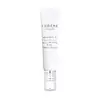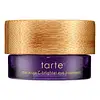What's inside
What's inside
 Key Ingredients
Key Ingredients

 Benefits
Benefits

 Concerns
Concerns

 Ingredients Side-by-side
Ingredients Side-by-side

Water
Skin ConditioningGlycerin
HumectantDecyl Cocoate
EmollientAluminum Starch Octenylsuccinate
AbsorbentButylene Glycol
HumectantPersea Gratissima Oil
Skin ConditioningDimethicone
EmollientButyrospermum Parkii Butter
Skin ConditioningRubus Chamaemorus Seed Extract
Skin ConditioningPhenoxyethanol
PreservativeAlbizia Julibrissin Bark Extract
MaskingPanthenol
Skin ConditioningTocopheryl Acetate
AntioxidantCeteth-20
CleansingCetyl Alcohol
EmollientGlyceryl Stearate
EmollientPEG-75 Stearate
Steareth-20
CleansingCI 77891
Cosmetic ColorantMica
Cosmetic ColorantPolysilicone-11
Polyvinyl Alcohol
Sodium Polyacrylate
AbsorbentUndecane
EmollientAscorbyl Glucoside
AntioxidantTridecane
PerfumingPropanediol
SolventDisodium EDTA
Ethylhexylglycerin
Skin ConditioningAllantoin
Skin ConditioningSodium Hydroxide
BufferingXanthan Gum
EmulsifyingAdenosine
Skin ConditioningCaprylyl Glycol
EmollientHydrolyzed Hyaluronic Acid
HumectantSodium Citrate
BufferingSodium Benzoate
MaskingDarutoside
Skin ConditioningGlucose
HumectantCitric Acid
BufferingChondrus Crispus Extract
Skin ConditioningTocopherol
AntioxidantHelianthus Annuus Seed Oil
EmollientWater, Glycerin, Decyl Cocoate, Aluminum Starch Octenylsuccinate, Butylene Glycol, Persea Gratissima Oil, Dimethicone, Butyrospermum Parkii Butter, Rubus Chamaemorus Seed Extract, Phenoxyethanol, Albizia Julibrissin Bark Extract, Panthenol, Tocopheryl Acetate, Ceteth-20, Cetyl Alcohol, Glyceryl Stearate, PEG-75 Stearate, Steareth-20, CI 77891, Mica, Polysilicone-11, Polyvinyl Alcohol, Sodium Polyacrylate, Undecane, Ascorbyl Glucoside, Tridecane, Propanediol, Disodium EDTA, Ethylhexylglycerin, Allantoin, Sodium Hydroxide, Xanthan Gum, Adenosine, Caprylyl Glycol, Hydrolyzed Hyaluronic Acid, Sodium Citrate, Sodium Benzoate, Darutoside, Glucose, Citric Acid, Chondrus Crispus Extract, Tocopherol, Helianthus Annuus Seed Oil
Water
Skin ConditioningGlycerin
HumectantButylene Glycol
HumectantMangifera Indica Seed Butter
Skin ConditioningDimethicone
EmollientHydrogenated Castor Oil Isostearate
Skin ConditioningPolyglyceryl-10 Pentastearate
Skin ConditioningBehenyl Alcohol
EmollientCocos Nucifera Oil
MaskingPentaerythrityl Tetraethylhexanoate
EmollientTetrahexyldecyl Ascorbate
AntioxidantCaprylyl Methicone
Skin ConditioningCetearyl Alcohol
EmollientGlyceryl Stearate
EmollientSodium Stearoyl Lactylate
EmulsifyingPanthenol
Skin ConditioningCaprylyl Glycol
EmollientAlcohol
AntimicrobialSqualane
EmollientPolysorbate 80
EmulsifyingSodium Polyacrylate
AbsorbentHydroxyethyl Acrylate/Sodium Acryloyldimethyl Taurate Copolymer
Emulsion StabilisingCyclopentasiloxane
EmollientMica
Cosmetic ColorantDipropylene Glycol
HumectantSodium Acrylate/Sodium Acryloyldimethyl Taurate Copolymer
Emulsion StabilisingGlycosphingolipids
EmollientHordeum Vulgare Extract
EmollientTocotrienols
Skin ConditioningIsohexadecane
EmollientElaeis Guineensis Oil
EmollientTocopheryl Acetate
AntioxidantDimethiconol
EmollientDipotassium Glycyrrhizate
HumectantChlorella Vulgaris Extract
Skin ConditioningPhospholipids
Skin ConditioningAdenosine
Skin ConditioningTocopherol
AntioxidantPolysorbate 60
EmulsifyingSodium Hyaluronate
HumectantSorbitan Isostearate
EmulsifyingDisodium EDTA
1,2-Hexanediol
Skin ConditioningBeta-Glucan
Skin ConditioningPassiflora Edulis Seed Oil
EmollientAscorbyl Palmitate
AntioxidantRetinyl Palmitate
Skin ConditioningPhenoxyethanol
PreservativeSodium Benzoate
MaskingCI 77891
Cosmetic ColorantWater, Glycerin, Butylene Glycol, Mangifera Indica Seed Butter, Dimethicone, Hydrogenated Castor Oil Isostearate, Polyglyceryl-10 Pentastearate, Behenyl Alcohol, Cocos Nucifera Oil, Pentaerythrityl Tetraethylhexanoate, Tetrahexyldecyl Ascorbate, Caprylyl Methicone, Cetearyl Alcohol, Glyceryl Stearate, Sodium Stearoyl Lactylate, Panthenol, Caprylyl Glycol, Alcohol, Squalane, Polysorbate 80, Sodium Polyacrylate, Hydroxyethyl Acrylate/Sodium Acryloyldimethyl Taurate Copolymer, Cyclopentasiloxane, Mica, Dipropylene Glycol, Sodium Acrylate/Sodium Acryloyldimethyl Taurate Copolymer, Glycosphingolipids, Hordeum Vulgare Extract, Tocotrienols, Isohexadecane, Elaeis Guineensis Oil, Tocopheryl Acetate, Dimethiconol, Dipotassium Glycyrrhizate, Chlorella Vulgaris Extract, Phospholipids, Adenosine, Tocopherol, Polysorbate 60, Sodium Hyaluronate, Sorbitan Isostearate, Disodium EDTA, 1,2-Hexanediol, Beta-Glucan, Passiflora Edulis Seed Oil, Ascorbyl Palmitate, Retinyl Palmitate, Phenoxyethanol, Sodium Benzoate, CI 77891
 Reviews
Reviews

Ingredients Explained
These ingredients are found in both products.
Ingredients higher up in an ingredient list are typically present in a larger amount.
Adenosine is in every living organism. It is one of four components in nucleic acids that helps store our DNA.
Adenosine has many benefits when used. These benefits include hydrating the skin, smoothing skin, and reducing wrinkles. Once applied, adenosine increases collagen production. It also helps with improving firmness and tissue repair.
Studies have found adenosine may also help with wound healing.
In skincare products, Adenosine is usually derived from yeast.
Learn more about AdenosineButylene Glycol (or BG) is used within cosmetic products for a few different reasons:
Overall, Butylene Glycol is a safe and well-rounded ingredient that works well with other ingredients.
Though this ingredient works well with most skin types, some people with sensitive skin may experience a reaction such as allergic rashes, closed comedones, or itchiness.
Learn more about Butylene GlycolCaprylyl Glycol is a humectant and emollient, meaning it attracts and preserves moisture.
It is a common ingredient in many products, especially those designed to hydrate skin. The primary benefits are retaining moisture, skin softening, and promoting a healthy skin barrier.
Though Caprylyl Glycol is an alcohol derived from fatty acids, it is not the kind that can dry out skin.
This ingredient is also used as a preservative to extend the life of products. It has slight antimicrobial properties.
Learn more about Caprylyl GlycolCi 77891 is a white pigment from Titanium dioxide. It is naturally found in minerals such as rutile and ilmenite.
It's main function is to add a white color to cosmetics. It can also be mixed with other colors to create different shades.
Ci 77891 is commonly found in sunscreens due to its ability to block UV rays.
Learn more about CI 77891Dimethicone is a type of synthetic silicone created from natural materials such as quartz.
What it does:
Dimethicone comes in different viscosities:
Depending on the viscosity, dimethicone has different properties.
Ingredients lists don't always show which type is used, so we recommend reaching out to the brand if you have questions about the viscosity.
This ingredient is unlikely to cause irritation because it does not get absorbed into skin. However, people with silicone allergies should be careful about using this ingredient.
Note: Dimethicone may contribute to pilling. This is because it is not oil or water soluble, so pilling may occur when layered with products. When mixed with heavy oils in a formula, the outcome is also quite greasy.
Learn more about DimethiconeDisodium EDTA plays a role in making products more stable by aiding other preservatives.
It is a chelating agent, meaning it neutralizes metal ions that may be found in a product.
Disodium EDTA is a salt of edetic acid and is found to be safe in cosmetic ingredients.
Learn more about Disodium EDTAGlycerin is already naturally found in your skin. It helps moisturize and protect your skin.
A study from 2016 found glycerin to be more effective as a humectant than AHAs and hyaluronic acid.
As a humectant, it helps the skin stay hydrated by pulling moisture to your skin. The low molecular weight of glycerin allows it to pull moisture into the deeper layers of your skin.
Hydrated skin improves your skin barrier; Your skin barrier helps protect against irritants and bacteria.
Glycerin has also been found to have antimicrobial and antiviral properties. Due to these properties, glycerin is often used in wound and burn treatments.
In cosmetics, glycerin is usually derived from plants such as soybean or palm. However, it can also be sourced from animals, such as tallow or animal fat.
This ingredient is organic, colorless, odorless, and non-toxic.
Glycerin is the name for this ingredient in American English. British English uses Glycerol/Glycerine.
Learn more about GlycerinGlyceryl Stearate is a mix of glycerin and stearic acid.
It is used to stabilize the mixing of water and oil ingredients. By preventing these ingredients from separating, it can help elongate shelf life. It can also help thicken the product's texture.
As an emollient, it helps soften skin and supports barrier-replenishing ingredients.
In cosmetics, Glyceryl Stearate is often made from vegetable oils or synthetically produced.
This ingredient may not be fungal-acne safe
Fun fact: The human body also creates Glyceryl Stearate naturally.
Learn more about Glyceryl StearateMica is a naturally occurring mineral used to add shimmer and color in cosmetics. It can also help improve the texture of a product or give it an opaque, white/silver color.
Serecite is the name for very fine but ragged grains of mica.
This ingredient is often coated with metal oxides like titanium dioxide. Trace amounts of heavy metals may be found in mica, but these metals are not harmful in our personal products.
Mica has been used since prehistoric times throughout the world. Ancient Egyptian, Indian, Greek, Roman, Aztec, and Chinese civilizations have used mica.
Learn more about MicaPanthenol is a common ingredient that helps hydrate and soothe the skin. It is found naturally in our skin and hair.
There are two forms of panthenol: D and L.
D-panthenol is also known as dexpanthenol. Most cosmetics use dexpanthenol or a mixture of D and L-panthenol.
Panthenol is famous due to its ability to go deeper into the skin's layers. Using this ingredient has numerous pros (and no cons):
Like hyaluronic acid, panthenol is a humectant. Humectants are able to bind and hold large amounts of water to keep skin hydrated.
This ingredient works well for wound healing. It works by increasing tissue in the wound and helps close open wounds.
Once oxidized, panthenol converts to pantothenic acid. Panthothenic acid is found in all living cells.
This ingredient is also referred to as pro-vitamin B5.
Learn more about PanthenolPhenoxyethanol is a preservative that has germicide, antimicrobial, and aromatic properties. Studies show that phenoxyethanol can prevent microbial growth. By itself, it has a scent that is similar to that of a rose.
It's often used in formulations along with Caprylyl Glycol to preserve the shelf life of products.
Sodium Benzoate is a preservative. It's used in both cosmetic and food products to inhibit the growth of mold and bacteria. It is typically produced synthetically.
Both the US FDA and EU Health Committee have approved the use of sodium benzoate. In the US, levels of 0.1% (of the total product) are allowed.
Sodium benzoate works as a preservative by inhibiting the growth of bacteria inside of cells. It prevents the cell from fermenting a type of sugar using an enzyme called phosphofructokinase.
It is the salt of benzoic acid. Foods containing sodium benzoate include soda, salad dressings, condiments, fruit juices, wines, and snack foods.
Studies for using ascorbic acid and sodium benzoate in cosmetics are lacking, especially in skincare routines with multiple steps.
We always recommend speaking with a professional, such as a dermatologist, if you have any concerns.
Learn more about Sodium BenzoateSodium Polyacrylate is the sodium salt of polyacrylic acid. It is used as an absorber, emollient, and stabilizer.
This ingredient is a super-absorbent polymer - meaning it can absorb 100 to 1000 times its mass in water. As an emollient, Sodium Polyacrylate helps soften and soothe skin. Emollients work by creating a barrier to trap moisture in. This helps keep your skin hydrated.
Tocopherol (also known as Vitamin E) is a common antioxidant used to help protect the skin from free-radicals and strengthen the skin barrier. It's also fat soluble - this means our skin is great at absorbing it.
Vitamin E also helps keep your natural skin lipids healthy. Your lipid skin barrier naturally consists of lipids, ceramides, and fatty acids. Vitamin E offers extra protection for your skin’s lipid barrier, keeping your skin healthy and nourished.
Another benefit is a bit of UV protection. Vitamin E helps reduce the damage caused by UVB rays. (It should not replace your sunscreen). Combining it with Vitamin C can decrease sunburned cells and hyperpigmentation after UV exposure.
You might have noticed Vitamin E + C often paired together. This is because it is great at stabilizing Vitamin C. Using the two together helps increase the effectiveness of both ingredients.
There are often claims that Vitamin E can reduce/prevent scarring, but these claims haven't been confirmed by scientific research.
Learn more about TocopherolTocopheryl Acetate is AKA Vitamin E. It is an antioxidant and protects your skin from free radicals. Free radicals damage the skin by breaking down collagen.
One study found using Tocopheryl Acetate with Vitamin C decreased the number of sunburned cells.
Tocopheryl Acetate is commonly found in both skincare and dietary supplements.
Learn more about Tocopheryl AcetateWater. It's the most common cosmetic ingredient of all. You'll usually see it at the top of ingredient lists, meaning that it makes up the largest part of the product.
So why is it so popular? Water most often acts as a solvent - this means that it helps dissolve other ingredients into the formulation.
You'll also recognize water as that liquid we all need to stay alive. If you see this, drink a glass of water. Stay hydrated!
Learn more about Water